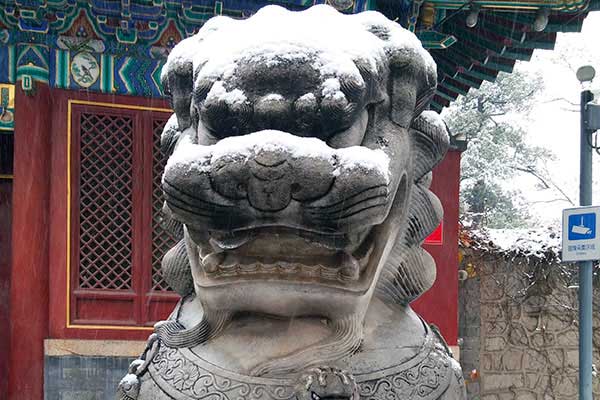
Designing across cultures: Engineering undergrads in China
Published: January 8, 2016
More than a dozen University of Toronto Engineering students and professors spent four days in China recently collaborating with colleagues from two universities on projects ranging from satellite design to assistive devices.
The trip was part of the department of mechanical and industrial engineering’s fourth-year international capstone course, which allows students to work collaboratively across continents and cultures on industry-sponsored engineering projects.
“We are training and educating students to be able to effectively communicate and work on a global scale,” says Professor Kamran Behdinan, who holds the NSERC Chair in Multidisciplinary Engineering Design and has been one of the key people behind the international capstone program. “It brings another dimension to their education, and to collaborative engineering design.
“Diversity is very important in engineering. Students learn from each other, bringing new perspectives from their respective environments that have a positive impact on design and innovation.”
The course, which is celebrating its fifth anniversary, includes partnerships with Peking University (PKU) in Beijing, the National University of Singapore, the University of California, Irvine and, new this year, Beijing’s Tsinghua University. Many of the projects are sponsored by industrial partners in Canada or the partner country.
Fausto Fanin, in his fourth year of studying mechanical engineering, is part of a group that is working on ways to stabilize the motion of a CubeSat, a versatile type of satellite that is no bigger than a toaster.
“The PKU students have a great variety of different specializations: materials science and engineering, structural analysis, energy and resource engineering,” he says. “It brings a wide range of abilities to the team.”
The students meet in person only twice. In November, the U of T teams travel abroad to meet their collaborators face-to-face, and in April students from the partner institutions come to Toronto to present their final designs. But the students are in constant contact via email and other online tools.
“The PKU students were always there for us, no matter how early in the morning or how late at night, and they were really helpful and supportive,” says fourth-year mechanical engineering student Qiaozhi Liu, whose team is working on a device that could harvest the kinetic energy of pedestrians walking along a subway platform, turning it into electricity to charge smart phones.
(Below, students from U of T Engineering, the University of California Irvine and Peking University/ photo by Professor Farzad Ahmadkhanlou, University of California, Irvine)

Other projects involve designing a new steering system for a highly fuel-efficient experimental vehicle, and creating reconfigurable assistive devices to help people with mobility challenges.
For the students, the opportunity to visit China is a major benefit of the program. “One of the highlights was the first night of arrival, when the PKU team took us for dinner,” says Liu. “We shared our opinions about the project and talked about engineering student life and cultures in our universities. It was fun to discover that we actually shared the same jokes and opinions.”
The cultural exchange is all part of the plan. “In today’s intense environment of globalization, it is important for students to learn how to work with people from different countries and cultures,” says Professor Jean Zu, chair of the mechanical and industrial engineering department, who is supervising two of the teams and travelled to China with the group.
For Fanin, one of the highlights of the trip was the dining experience. “The food I ate on the trip was the best part,” he says. “I tried everything from Beijing duck in an upscale restaurant to homemade dumplings, and would do so again without hesitation.”



